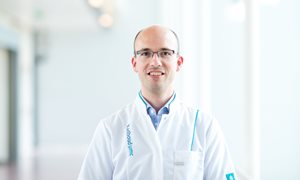
The combination of two medications, misoprostol and mifepristone, improves the results in treating a non-vital pregnancy and reduces complications. The costs are also reduced. This is evident from PhD research by Lotte Hamel, conducted within a collaboration between the Radboud university medical center and the Canisius Wilhelmina Hospital (CWZ). The combination is already in the Dutch guidelines, but is not yet reimbursed by health insurers.
In a non-vital pregnancy something goes wrong in the first fourteen weeks of pregnancy: no healthy embryo develops, the heart has stopped or never started beating. If the pregnancy does not end in a miscarriage, treatment is needed to empty the uterus. Worldwide, more than 20 million women seek medical help for this each year. This number will continue to rise as women become pregnant later and later, and the risk of a non-vital pregnancy increases with age.
Terminating a pregnancy is done with curettage, emptying the uterus with a suction tube, or with drugs that induce miscarriage. A curettage is more likely to cause complications and therefore drugs are preferred. For abortion in a vital pregnancy, it was already known that a combination of two drugs works better than a single drug. Researchers at the Radboudumc and the CWZ have now shown that the combination is also better for non-vital pregnancies.
Smart combination
‘Previously we used only misoprostol, but we now show that pre-treatment with mifepristone gives much better results’, says Lotte Hamel, who will defend her thesis on the subject on September 9. ‘Our clinical study showed that with misoprostol alone, sixty percent of women had a complete miscarriage. That increased to eighty percent with the combination of drugs. In addition, with misoprostol alone, curettage was still necessary in thirty percent of the women. That dropped to ten percent with both drugs.’
The combination of drugs not only improves outcomes in terminating non-vital pregnancies, but also appears to be cost-effective. Although adding the second drug mifepristone incurs additional costs, Hamel calculated that the combination ultimately saves an average of 135 euros per patient. In many cases the addition of mifepristone prevents further examinations by ultrasound and possible curettage.
Recommended in the guideline
The results of the study were measured after a waiting period of one week between the interview with the patient and the start of treatment. A waiting period of five days is still mandatory in The Netherlands for an abortion in the case of a vital pregnancy, but not in the case of a non-vital pregnancy. ‘Still, I advocate the waiting period even if the pregnancy has stopped developing’, Hamel explains. ‘In half of the cases a miscarriage still occurs spontaneously during the waiting period. The body then regulates the miscarriage itself and medication is not necessary. I think this is better for women to process the loss of the pregnancy.’
In 2020, the combination of the two medications was included in the guideline at the Dutch Society for Obstetrics and Gynecology (NVOG). ‘In addition to our research, studies have also been conducted in the US and UK with similar results’, says co-supervisor Sjors Coppus of the Maxima Medical Center. ‘The evidence that the combination works better is therefore very convincing. Unfortunately, health insurers don't reimburse it yet. Sometimes hospitals pay for it themselves, but that's not possible everywhere. Hopefully the insurers will soon start to reimburse this care in the basic package.’
More information on this thesis defense
Thesis defense on 9 September 2022 at 10.30 am by Lotte Hamel. Title of the dissertation: Early Pregnancy Loss: Medical Management with Mifepristone (available online after 9 September). Supervisors: Prof. Dr. D.D.M. Braat, Prof. Dr. F.P.H.A. Vandenbussche. Co-supervisors: dr. M.P.L.M. Snijders (CWZ) and dr. S.F.P.J. Coppus (MMC). The defense can be followed via this livestream.
This research was funded by the Innovation Fund Health Insurers.
 Lotte Hamel
Lotte Hamel
-
Want to know more about these subjects? Click on the buttons below for more news.
More information
Annemarie Eek

wetenschapsvoorlichter






